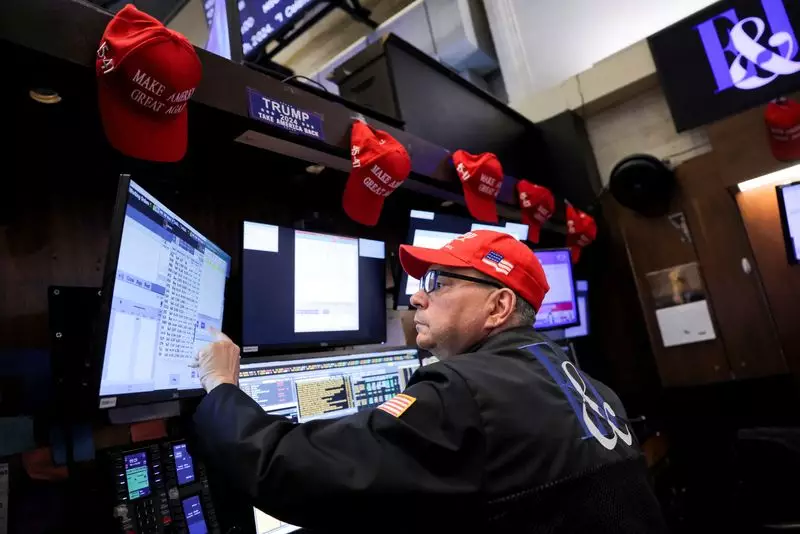The announcement made by President-elect Donald Trump regarding the imposition of tariffs on goods from Mexico, Canada, and China certainly sent shockwaves through the global markets. On his very first day in office, Trump proposed a 25% tariff on products from Mexico and Canada, alongside a 10% tariff on goods from China. This bold move is not just a statement; it sets the stage for significant economic implications both in the United States and abroad. The immediate consequences were evident as the U.S. dollar surged— rising by 1% against the Canadian dollar and 2% against the Mexican peso. Simultaneously, Asian stock markets and European equity futures plummeted, with S&P 500 futures dropping by 0.3%.
Market Reactions and Economic Forecasts
Market sentiments are often volatile, especially in reaction to headlines from influential figures. Economic analysts offered a rich tapestry of reactions, reflecting different perspectives on the impending tariffs. For instance, Gary Ng from Natixis in Hong Kong described the tariffs as a shock that would particularly affect Chinese export sectors, increasing the pressure on corporate profits. The uncertainty surrounding these tariffs has investors on edge, pondering over the potential longer-term effects on cross-border trade.
In contrast, Simon Yu from Panyao Asset Management noted that tariffs are part of Trump’s negotiation strategy. He suggested that China is likely prepared for these tariff challenges and may accelerate strategies related to self-reliance and import substitution to mitigate any adverse effects. This counters the perception that America’s trade policies can effectively pressure countries like China into compliance.
Several analysts likened Trump’s announcement to a threatening gesture rather than a well-articulated policy. William Reinsch from the Center for Strategic and International Studies pointed out that the statement seemed more like a strategic intimidation tactic, indicating a somewhat inconsistent approach to trade discussions. In a similar vein, Rob Carnell from ING advised investors to take the proposed tariffs with skepticism, suggesting that they might not translate into actual policies as immediate threats often fail to deliver tangible results.
These varying interpretations reveal an underlying narrative: while Trump’s tariffs may initially unsettle markets, their long-term implications remain uncertain. This also highlights the potential disconnect between political rhetoric and actionable economic policy, a characteristic that many believe could define Trump’s presidency.
The Role of Currency and Trade Dynamics
Moreover, the immediate reaction of currencies showed the fragile interconnectedness of global trade. As noted by Sean Callow of ITC Markets, the fallout from these tariffs is likely to affect trade-sensitive currencies in the near term, especially given the broader context of an uncertain economic calendar. The decline of the Mexican peso and Canadian dollar against the dollar underscores how international markets are reacting to U.S. fiscal policy signals.
Khoon Goh from ANZ highlighted an interesting point regarding the conditions linked to the tariffs, particularly Trump’s claims connecting tariffs to issues such as immigration and drug trafficking. If this indeed is the foundation of the tariffs, we may witness a nuanced approach that could open the door for negotiations rather than outright conflict.
As the market adjusts to these new announcements, analysts stress the importance of evaluating the potential resilience of currencies such as the Mexican peso, given traders’ tendencies to buy on dips. Factors like Trump’s promise of more competitive tariffs (with initial talk of rates up to 60%) may cause fluctuations in market conditions, but the actual execution of such a proposal is highly speculative, as criticized by market analysts.
Looking ahead, there is a strong sense of ambiguity surrounding the implementation of these tariffs. Operating on a framework of uncertainty, market participants will have to navigate through ongoing trade discussions and evaluate how the political landscape might change. Ultimately, Trump’s move sets the tone for future domestic policies and international relations, fostering an environment ripe with both risk and opportunity.
The proposed tariffs by Trump are not merely transactions on a ledger; they signify a shift in the way trade is conducted, both psychologically and financially. The implications stretch far beyond immediate market reactions and reflect a willingness to confront key economic partners in a way that might redefine trade norms. As we move forward, it remains essential to watch how the Administration’s broader trade strategy unfolds and shapes global economics in unpredictable yet captivating ways.

